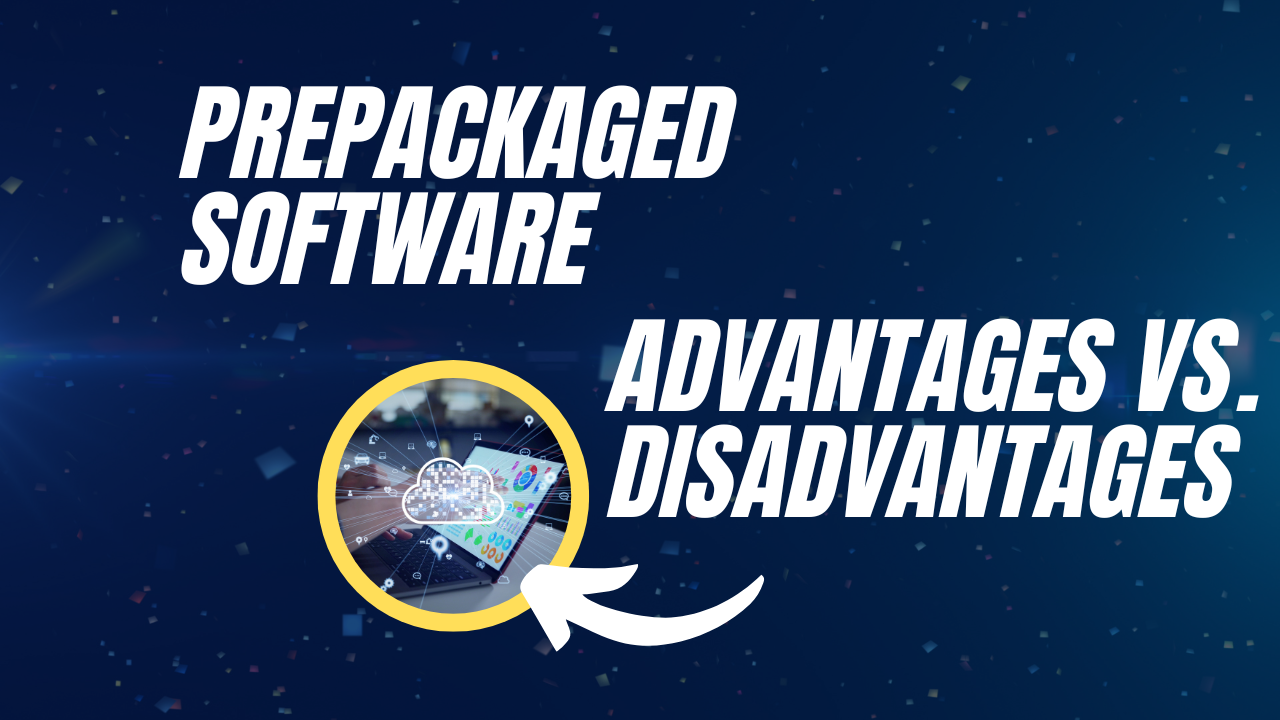Software
What are the Advantages and Disadvantages of Buying Prepackaged Software

Prepackaged software, or as we often call it, off-the-shelf software, is akin to a ready-made suit. It’s designed to fit a wide range of customers, and for many, it’s a suitable, economical choice. However, just like that ready-made suit, it might not fit everyone perfectly.
Advantages of Prepackaged Software:
1. Cost-Effectiveness:
The first advantage that comes to mind is cost-effectiveness. Much like a mass-produced item, the cost of developing prepackaged software is distributed among numerous customers, making it a more economical option than custom software, particularly for small businesses or individual users. This cost consideration extends to both the initial purchase price and ongoing costs, such as maintenance and upgrades, which are typically managed by the software provider.
2. Quick Implementation
We consider the ease of implementation. Since prepackaged software is designed to be used ‘out of the box’, it can be deployed rapidly, saving valuable time. Think of it as purchasing a pre-assembled piece of furniture – you can use it immediately, without needing to piece it together yourself.
3. Standardization
Another vital aspect is standardization. Prepackaged software often adheres to industry standards, which means it’s designed to play well with other software and systems. This interoperability can reduce headaches and simplify system administration.
4. Regular Updates
Then there’s the benefit of continuous updates. The vendors of prepackaged software typically provide regular updates, ensuring users have access to the latest features and security enhancements. This ongoing support helps to maintain the software’s relevance and protect against emerging threats.
5. Support and Documentation
Benefit of extensive support and documentation should not be overlooked. Comprehensive user guides, FAQ sections, and customer support services are usually part and parcel of prepackaged software, making it easier for users to troubleshoot issues or learn how to utilize the software effectively.
Disadvantages of Prepackaged Software:
1. Limited Customization
Foremost is the issue of limited customization. Remember our ready-made suit analogy? Just as a one-size-fits-all suit might not fit everyone perfectly, prepackaged software might not meet every user’s unique requirements. It’s a balancing act between broad applicability and tailored functionality, and the lack of specific features could be a significant disadvantage for some users.
2. Vendor Dependence
There’s the risk of vendor dependence. Users are tied to the software provider for updates and improvements. If the company discontinues the software or goes under, users could find themselves in a bind. Think of it as owning a vehicle of a brand that no longer exists – getting parts and service could become a real challenge.
3. Potential Overkill
A third downside could be over-complication. Some off-the-shelf software solutions come packed with a multitude of features, many of which might not be necessary for all users. This overabundance can lead to unnecessary complexity, akin to buying a high-tech car when all you need is to commute short distances.
4. Compatibility Issues
We must consider potential compatibility issues. Despite industry standards, not all software and systems play nice together. There can be instances where prepackaged software doesn’t mesh well with existing systems, creating a need for workarounds or additional software to bridge the gap.
5. Licensing Restrictions
licensing restrictions can pose limitations. Many prepackaged software solutions come with usage restrictions, such as the number of allowed installations or users. These constraints can be a hindrance for larger organizations or specific use cases.
While prepackaged software provides a quick and often economically sensible solution, it’s not a silver bullet for all software needs.
When deciding between prepackaged software and a custom solution, consider this analogy: prepackaged software is like a standard menu at a restaurant. It’s quick, it’s convenient, and it caters to a broad range of tastes. However, if you have specific dietary requirements or unique tastes, the standard menu may not fully satisfy you. For that, you would need a custom meal prepared to your exact specifications, akin to custom software development.
Here’s where a thorough needs analysis comes in. It involves understanding your specific needs, the scope of your operations, the complexity of tasks, and the skill level of your users. This will help you determine whether a prepackaged solution is adequate, or if you would benefit from a more customized software.
It is also important to consider the future. While prepackaged software may suit your needs today, will it be able to adapt as your needs evolve? Can it scale as your operations grow? These are crucial questions that need to be addressed.


















